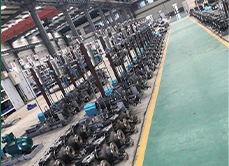Slovenian
- Afrikaans
- Albanian
- Amharic
- Arabic
- Armenian
- Azerbaijani
- Basque
- Belarusian
- Bengali
- Bosnian
- Bulgarian
- Catalan
- Cebuano
- Corsican
- Croatian
- Czech
- Danish
- Dutch
- English
- Esperanto
- Estonian
- Finnish
- French
- Frisian
- Galician
- Georgian
- German
- Greek
- Gujarati
- Haitian Creole
- hausa
- hawaiian
- Hebrew
- Hindi
- Miao
- Hungarian
- Icelandic
- igbo
- Indonesian
- irish
- Italian
- Japanese
- Javanese
- Kannada
- kazakh
- Khmer
- Rwandese
- Korean
- Kurdish
- Kyrgyz
- Lao
- Latin
- Latvian
- Lithuanian
- Luxembourgish
- Macedonian
- Malgashi
- Malay
- Malayalam
- Maltese
- Maori
- Marathi
- Mongolian
- Myanmar
- Nepali
- Norwegian
- Norwegian
- Occitan
- Pashto
- Persian
- Polish
- Portuguese
- Punjabi
- Romanian
- Russian
- Samoan
- Scottish Gaelic
- Serbian
- Sesotho
- Shona
- Sindhi
- Sinhala
- Slovak
- Slovenian
- Somali
- Spanish
- Sundanese
- Swahili
- Swedish
- Tagalog
- Tajik
- Tamil
- Tatar
- Telugu
- Thai
- Turkish
- Turkmen
- Ukrainian
- Urdu
- Uighur
- Uzbek
- Vietnamese
- Welsh
- Bantu
- Yiddish
- Yoruba
- Zulu
Telephone: +86 13120555503
Email: frank@cypump.com
Dec . 21, 2024 22:36 Back to list
pump submersible
Understanding Submersible Pumps
Submersible pumps are essential devices utilized in various applications, particularly in water and fluid management. These pumps are designed to operate while fully submerged in the fluid they are pumping, which differentiates them from standard pumps that draw fluid from above. The features and benefits of submersible pumps make them indispensable in many sectors, ranging from agriculture to municipal water systems.
How Submersible Pumps Work
Submersible pumps are equipped with a motor that is tightly sealed. This sealing is crucial because it allows the pump to be submerged without water entering the electrical components. The basic operation of a submersible pump involves a multi-stage assembly that consists of an impeller and a diffuser. When activated, the motor powers the impeller, drawing the fluid into the pump and forcing it upward, where it can be discharged above the surface.
The design of the impeller and the pump casing is crucial. Submersible pumps can vary widely in terms of size, materials, and power sources, catering to different fluid types and pumping requirements. Whether dealing with clean water, wastewater, or even harsh chemicals, there are submersible pumps engineered specifically for each scenario.
Applications of Submersible Pumps
One of the most common applications of submersible pumps is in the management of groundwater. For instance, in construction sites, these pumps are often employed to dewater excavations and prevent flooding. In agriculture, submersible pumps are widely used to irrigate fields, drawing water from wells or nearby water bodies. Their ability to operate underwater efficiently makes them ideal for such tasks.
Municipalities also rely on submersible pumps for sewage systems, wastewater treatment plants, and stormwater management. In these applications, submersible pumps help transport waste and manage excess water, significantly reducing the risk of flooding and environmental contamination. Furthermore, in fisheries and aquaculture, submersible pumps are used to circulate and aerate water, ensuring healthy environments for aquatic life.
pump submersible

Advantages of Using Submersible Pumps
Submersible pumps offer numerous advantages compared to traditional pumps. One of the primary benefits is their efficiency. Since they are submerged in the fluid, they can push water to the surface without requiring additional energy to draw it up, making them highly effective for deep-water applications. Additionally, their sealed design minimizes the risk of contamination and can handle a wide range of fluids, including those with solids.
Another significant advantage is their space-saving design. Submersible pumps don't require extensive surface infrastructure, allowing them to be installed in confined spaces or areas where traditional pumps would be impractical. This versatility extends to their installation, which is often simpler and less expensive due to reduced requirements for footings and supports.
Maintenance and Lifespan
While submersible pumps are generally robust, proper maintenance is crucial for ensuring their longevity. Regular checks should include inspecting seals for any signs of wear or damage, ensuring that the motor remains free of debris, and monitoring for unusual vibrations or noise during operation. Additionally, ensuring that the pump is not operating in conditions that exceed its operating limits will help extend its life.
Innovations in technology are also paving the way for smarter submersible pumps. Many now come equipped with sensors that provide real-time data on flow rates, temperature, and pressure. This information can be invaluable for operators looking to optimize performance and prevent potential failures.
Conclusion
In conclusion, submersible pumps are a vital technology that streamlines fluid management across numerous industries. Their unique design, efficiency, and versatility allow them to tackle a myriad of challenges associated with water and fluid transport. As technology continues to evolve, we can expect even more advanced features in submersible pump systems, further enhancing their capabilities and applications. Whether for agricultural use or municipal infrastructure, submersible pumps play a crucial role in modern water management.
-
ISG Series Vertical Pipeline Pump-Chi Yuan Pumps Co., LTD.|High Efficiency&Energy Conservation
NewsJul.30,2025
-
ISG Series Vertical Pipeline Pump - Chi Yuan Pumps Co., LTD.|Advanced Hydraulic Design&Energy-Efficient Solutions
NewsJul.30,2025
-
ISG Series Vertical Pipeline Pump - Chi Yuan Pumps Co., LTD.
NewsJul.30,2025
-
ISG Series Vertical Pipeline Pump - Chi Yuan Pumps Co., LTD.|energy-efficient fluid handling&industrial durability
NewsJul.30,2025
-
ISG Series Vertical Pipeline Pump - Chi Yuan Pumps | Advanced Engineering&Industrial Efficiency
NewsJul.30,2025
-
ISG Series Pipeline Pump - Chi Yuan Pumps | High Efficiency, Energy Saving
NewsJul.30,2025










